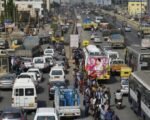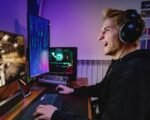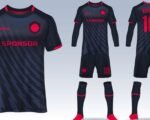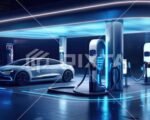From space manufacturing to AI-powered explorers, the UK’s most high-octane festival delivered a surprising twist — a glimpse into the future of humanity.
Beneath the roar of V12 engines and the smell of scorched rubber at the Goodwood Festival of Speed, a quieter revolution was underway. It wasn’t under a car hood, but just beyond the iconic Hillclimb, inside a sleek pavilion filled with wide-eyed children, curious engineers, and more than a few double takes. This was Future Lab — and this year, it didn’t just imagine the future, it built it.
Curated with cinematic flair by creative director Lucy Johnston, the 2025 edition of Future Lab asked a simple but profound question: What kind of future do we actually want to build?
The answers ranged from talking robots and space factories to AI that resurrects sunken ships and maps distant galaxies. If the rest of Goodwood was about speed, Future Lab was about direction — where humanity is heading, and how we might just get there.
Four Frontiers, One Mission
Future Lab 2025 unfolded across four themed zones: Mobility for Humanity, New Industrial Revolutions, Exploring Spatial Intelligence, and Our Big Blue Dot. Together, they touched on how we move, make, map, and mend — a blueprint for a smarter, more sustainable future.
And while nearly every booth buzzed with curiosity, a few innovations stood out not just for their wow factor, but for their deeper promise.
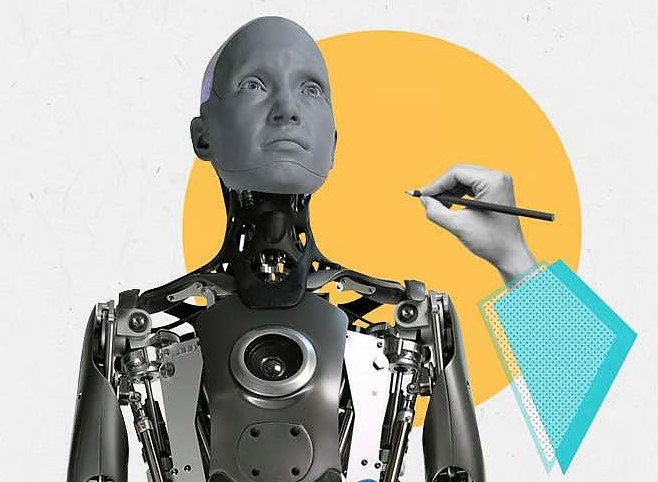
The Robot That Can Hold Your Gaze
Of all the marvels on display, none drew more attention than Ameca, the eerily lifelike humanoid robot presented by the National Robotarium. With expressive eyes, subtle facial gestures, and a presence that felt more human than machine, Ameca became an unexpected festival star.
Built by UK firm Engineered Arts, Ameca isn’t just for show — she’s a modular hardware platform capable of running virtually any AI, from ChatGPT to bespoke models. As National Robotarium’s Steve Maclaren explained, “She’s not just a robot that looks at you — she sees you.”
And while some grown-ups kept a cautious distance, kids were instantly at ease, chatting, laughing, and even posing for selfies. “This is how the next generation will grow up,” Maclaren noted. “Robots won’t be tools — they’ll be companions, colleagues, caregivers.”
Factories in Orbit
If Ameca had hearts fluttering on Earth, Space Forge aimed a little higher — roughly 500 kilometers higher. The Cardiff-based startup is pioneering reusable satellites that manufacture advanced materials in space.
Why space? Because microgravity and vacuum conditions are ideal for growing defect-free semiconductors and quantum crystals. “On Earth, gravity introduces imperfections,” explained Space Forge’s Andrew Griffiths. “In orbit, nature gets it right.”
Their current satellite, ForgeStar, is already transmitting data from low Earth orbit. The next generation? Fully recoverable spacecraft with heat shields and parachutes, ready to bring high-value materials home for commercial use.
Backed by the UK government, NATO, and the European Space Agency, this isn’t science fiction — it’s industrial revolution 2.0, set against the stars.
The Shipwreck Brought Back to Life
From orbit to ocean floor, the team at Falklands Maritime Heritage Trust unveiled something equally mind-blowing: the digital resurrection of Ernest Shackleton’s lost ship, Endurance.
Discovered beneath Antarctic ice in 2022, the century-old wreck lay undisturbed at 3,000 meters — until now. Using submersible drones and thousands of sonar scans, engineers created a high-resolution 3D model of the vessel.
But it’s what came next that stole hearts. With help from AI and photogrammetry, the Trust used 25,000 deep-sea images to build a true-to-life digital twin of Endurance. Then, over 350 painstaking hours, they 3D-printed a model so detailed it reveals individual nails in the deck planks.
“For kids especially, this brings history alive,” said the Trust’s Elena Lewendon. “It’s more than education — it’s storytelling with tech.”
Mapping the Cosmos With AI
While one team looked to the past, the University of Sussex and the European Space Agency looked further ahead — and much further away.
Their weapon of choice: the Euclid Space Telescope, now quietly circling the sun and mapping billions of galaxies in breathtaking detail. Its mission? To help solve one of physics’s greatest puzzles: what exactly is dark matter and dark energy?
Processing that much data manually would take centuries. Enter artificial intelligence. “We’re teaching machines to find the extraordinary in the ordinary,” said Professor Stephen Wilkins. “There’s no other way to do this at scale.”
If all goes to plan, Euclid could transform our understanding of the cosmos — and, possibly, our place in it.
Bonus Wonders: From Lunar VR to Climate Drones
Future Lab had no shortage of side quests. Visitors queued up to fly over the moon in a virtual reality pod, courtesy of Somniacs and Cesium. They wandered through Apple Vision Pro reconstructions of nebulae and gas giants. BMW let fans play with the next-gen “Heart of Joy” haptic interface for electric vehicles, while Marble’s drones mapped biodiversity from the skies with centimeter-level precision.
Oh — and in case that wasn’t enough, there were also E1 electric raceboats slicing across water tanks in case anyone forgot this was still part of a speed festival.
A Festival With Purpose
What unites all these marvels? It’s not horsepower. It’s heart. Curator Lucy Johnston captured the spirit perfectly: “Future Lab is about meaningful innovation. It’s not just about shiny things — it’s about solving real problems through creativity and collaboration.”
In a world where technology often feels like it’s accelerating just for the sake of it, Goodwood’s Future Lab stands apart. It’s a reminder that why we build matters as much as what we build. And if 2025 is any indication, the future is looking not just bright — but beautiful.

